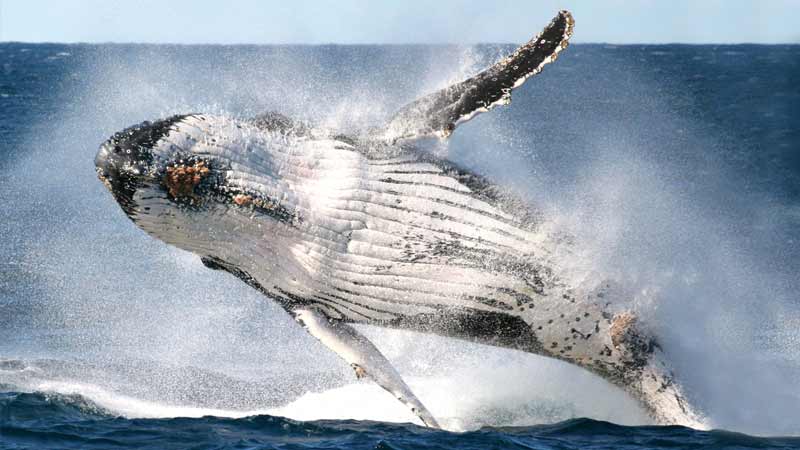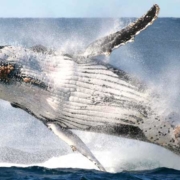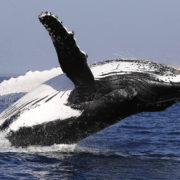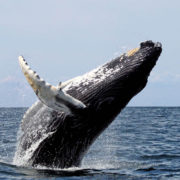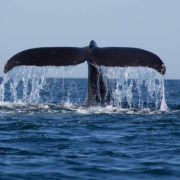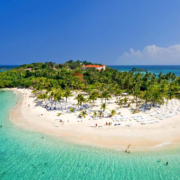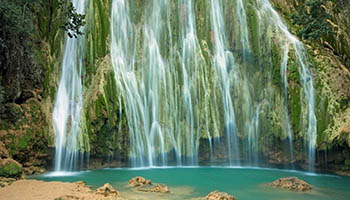Une opportunité unique d’observer les baleines a bosses dans leur lieu naturel de mise bas et de reproduction dans la Baie de Samana. Chaque année, de la mi-janvier à la mi-mars, les baleines à bosse visitent régulièrement la baie de Samana. Ces mammifères marins partent de l’Arctique pour venir se reproduire et donner naissance dans cette zone protégée le long de la côte Est Dominicaine. Cette migration dure depuis des siècles, comme en témoignent les vieilles fresques Taino retrouvées dans les cavernes près du Parc National de Los Haitises. Elles illustrent des baleines projetant des jets d’eau.
Listen to the male humpback’s solitary courting song and witness incredible displays of flippering, tail lobbing and breaching by the most active species of whale in the Atlantic.
Between December And March, about 2,000 humpback whales come to reproduce in the warm waters of the Atlantic Ocean. It’s an amazing sight waiting for you every year in the Samana Bay, humpback whales that come from the seas of Iceland, Greenland, Canada, and North America, who come to the Caribbean Sea to give birth and seek a mate in the hot water. From January to March, thousands remain in Samana Bay.
The show is impressive, when the 40-ton males jump up the water and fall down a few meters ahead. If it does not win any female reactions the male tries to attract them with a long and monotonous song that the whales can hear up to a radius of 30 kilometers. Only those who are diving can hear this song. After giving birth to their children, the whales prepare their return to the north. Since 1986 “Banco de Plata”, Samana, has become a sanctuary for the protection of whales.

